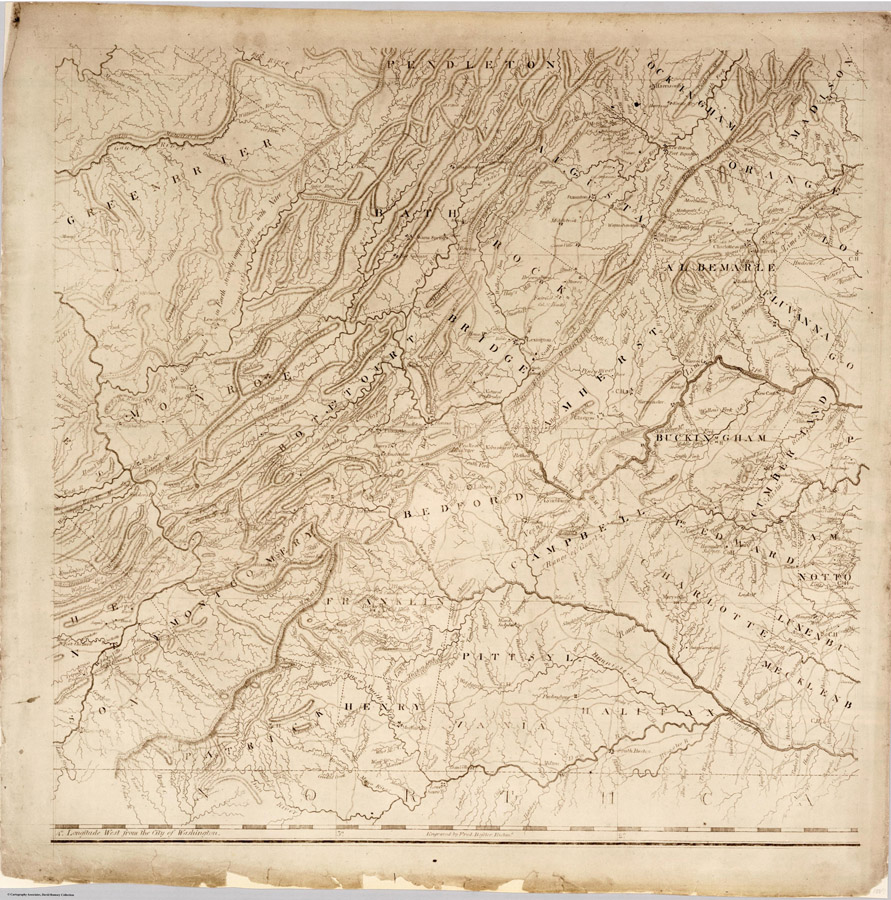|
Moderated by NW Okie! |
Volume 15 , Issue 122013Weekly eZine: (374 subscribers)Subscribe | Unsubscribe Using Desktop... |
History of Rockbridge County, Virginia - World War I

Until the United States entered the war in April, 1917, the Rockbridge newspapers gave little space to the conflict, except as to the telegraphic news on the front page. As in 1861, the people of this county were not precipitant. yet they were quick to rise to the situation when the crisis did arrive.
Two months before the war definitely came to the United States, Doctor Latane used these words in addressing the Democratic Club of Baltimore: "We must fight. No self-respecting nation can sit still while its ships are being kept in port by a submarine blockade of a foreign power." It was the next month that Congressman Flood spoke to the same effect in Washington.
A meeting was held in the courthouse at Lexington, March 26th, 1917, to discuss the relations between our country and Germany. William A. Anderson called the assemblage to order. E. L. Graham was made permanent chairman, and J. W. McClung secretary. Doctor D. B. Easter spoke on the nature of the government of Germany, Colonel R. T. Kerlin on the issues of the war, Doctor F. L. Riley on the failure of diplomacy, and General E. W. Nichols on what the United States can and ought to do. The meeting was also addressed by Colonel Hunter Pendleton, M. W. Paxton, and others. Numerous flags appeared not eh courthouse, and the anti-German spirit of the audience was very pronounced. The following resolutions were adopted by a unanimous vote:
Resolved: That we urge Congress and the President of the United States to put an end to the present state of armed neutrality, assumed by this country towards the European conflict, by declaring war, or that a state of war exists between this county and Germany, and we furthermore urge the prosecution of such war wight he utmost vigor, and with all our national resources.
At Fairfield, April 11th, 1917, a national flag, eight by twelve feet in size, was raised on a flagstaff 65 feet high. A week later Congress declared war, although the military aristocrats of Germany told their deluded countrymen that the action of aAmerica could not have the slightest effect on the outcome. These arrogant taskmasters were to learn to their cost that Americans learn war with speed and prosecute it with unequalled efficiency.
The war activities of Rockbridge were in the hands of efficient men and were well organized. Particularly was this true of the filling in of the questionnaires required of the men called out by the selective draft. The professional and business men of the county gave their whole time to these new duties.
Ver speedily after the declaration of war a military camp was opened by Washington and Lee University. Enthusiasm ran high, nearly every student signifying his desire to take two years of training. Before the close of April drilling was carried on every day. A committee of the faculty began enlisting the talents and capacity of both faculty and students for such special services as they might be called on to perform. The first unit to begin training was a volunteer ambulance corps. In June, 1918, it was given the cross de guerre for gallantry in the removal of wounded from the battle front. Had the war continued into 1919, military training would have been still further emphasized at Washington and Lee. It was the purpose of its authorities to enroll every student who was not physically disqualified. After October 1, 1918, all the students of military age who were detailed by the War Department for instruction in the army training schools were placed under military control and discipline. Already, the Doremus gymnasium and Castle Hill had been offered as a base hospital. Of the alumni of the university, 17.7 percent, entered the military service of their country.
At the Virginia Military Institute, as a matter of course, the military feature was even more pronounced. The attendance was record-breaking. This school sent out in all about 2,000 soldiers. Its parade ground was a scene of great activity in drill. By April 25, sixty tents had been set up in front of the barracks. Nearly 100 men were already in its training camp, and applications were coming in daily. At a meeting held in May by the Virginia Council of Defense, General Nichols counseled putting a stop tot he further distillation of alcoholic liquor from foodstuffs.
May 16, 1917, was Patriotic Day, and was fittingly celebrated in Lexington. Over 1,000 men marched in the morning procession, which was followed at one o'clock by a parade of 100 automobiles.
The first contribution from Rockbridge by the selective draft left Lexington for Camp Lee, September 9, 1917. It was made up of Charles P. Bragg, Howard E. Giles, Clem L. Irvine, Stokes K. Reid, Henry Rooklin, Martin B. Shafer, Thomas R. Simpson, Walter W. Thomas, and Samuel M. Wood. A second group of 68 men went off September 20, 1917. A third, of 60, went out October 9, 1917, after being banqueted at the Hotel Lexington by the business men of the town. A delegation of 30 colored men left October 27th, accompanied to the station by a colored band and by hundreds of other persons both white and colored.
The injunctions to conserve food, fuel, and clothing were well observed, although in the winter of 1917-18 wood was scarce and high at Lexington. The epidemic of influenza, which appeared int eh county before the signing of the armistice, slammed a greater death tool among the people at home than among the Rockbridge soldiers who faced German bullets and gas bombs.
| View or Add Comments (0 Comments)
| Receive
updates ( subscribers) |
Unsubscribe
| © . Linda Mcgill Wagner - began © 1999 Contact Me | |
